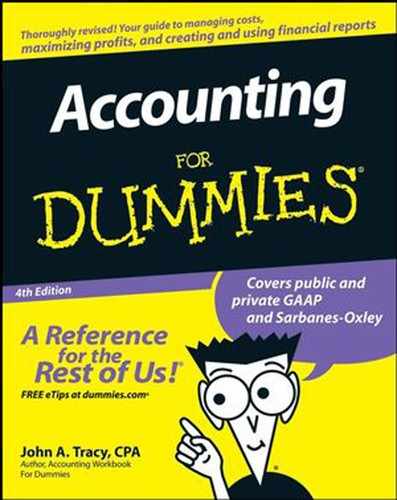6.5. Trying to Pin Down "Free Cash Flow"
A term has emerged in the lexicon of finance: free cash flow. This piece of language is not — I repeat, not — an officially defined term by any authoritative accounting rule-making body. Furthermore, the term does not appear in cash flow statements reported by businesses. Rather, free cash flow is street language, and the term appears in The Wall Street Journal and The New York Times. Securities brokers and investment analysts use the term freely (pun intended). Unfortunately, the term free cash flow hasn't settled down into one universal meaning, although most usages of the term have something to do with cash flow from operating activities.
The term free cash flow has been used to mean the following:
Net income plus depreciation expense, plus any other expense recorded during the period that does not involve the outlay of cash — such as amortization of costs of the intangible assets of a business, and other asset write-downs that don't require cash outlay
Cash flow from operating activities as reported in the statement of cash flows, although the very use of a different term (free cash flow) suggests a different meaning is intended
Cash flow from operating activities minus the amount spent on capital expenditures during the year (purchases or construction of property, plant, and equipment)
Earnings before interest, tax, depreciation, and amortization (EBITDA) — although this definition ignores the cash flow effects of changes in the short-term assets and liabilities directly involved in sales and expenses, and it obviously ignores that most of interest and income tax expenses are paid in cash during the period
|
One definition of free cash flow, in my view, is quite useful: cash flow from operating activities minus capital expenditures for the year. The idea is that a business needs to make capital expenditures in order to stay in business and thrive. And to make capital expenditures, the business needs cash. Only after paying for its capital expenditures does a business have "free" cash flow that it can use as it likes. In the example in this chapter, the free cash flow according to this definition is:
$1,515,000 cash flow from operating activities - $1,275,000 capital expenditures = $240,000 free cash flow
In many cases, cash flow from operating activities falls short of the money needed for capital expenditures. To close the gap a business has to borrow more money, persuade its owners to invest more money in the business, or dip into its cash reserve. Should a business in this situation distribute any of its profit to owners? After all, it has a cash deficit after paying for capital expenditures. But, in fact, many businesses make cash distributions from profit to their owners even when they don't have any free cash flow (as I just defined it).
